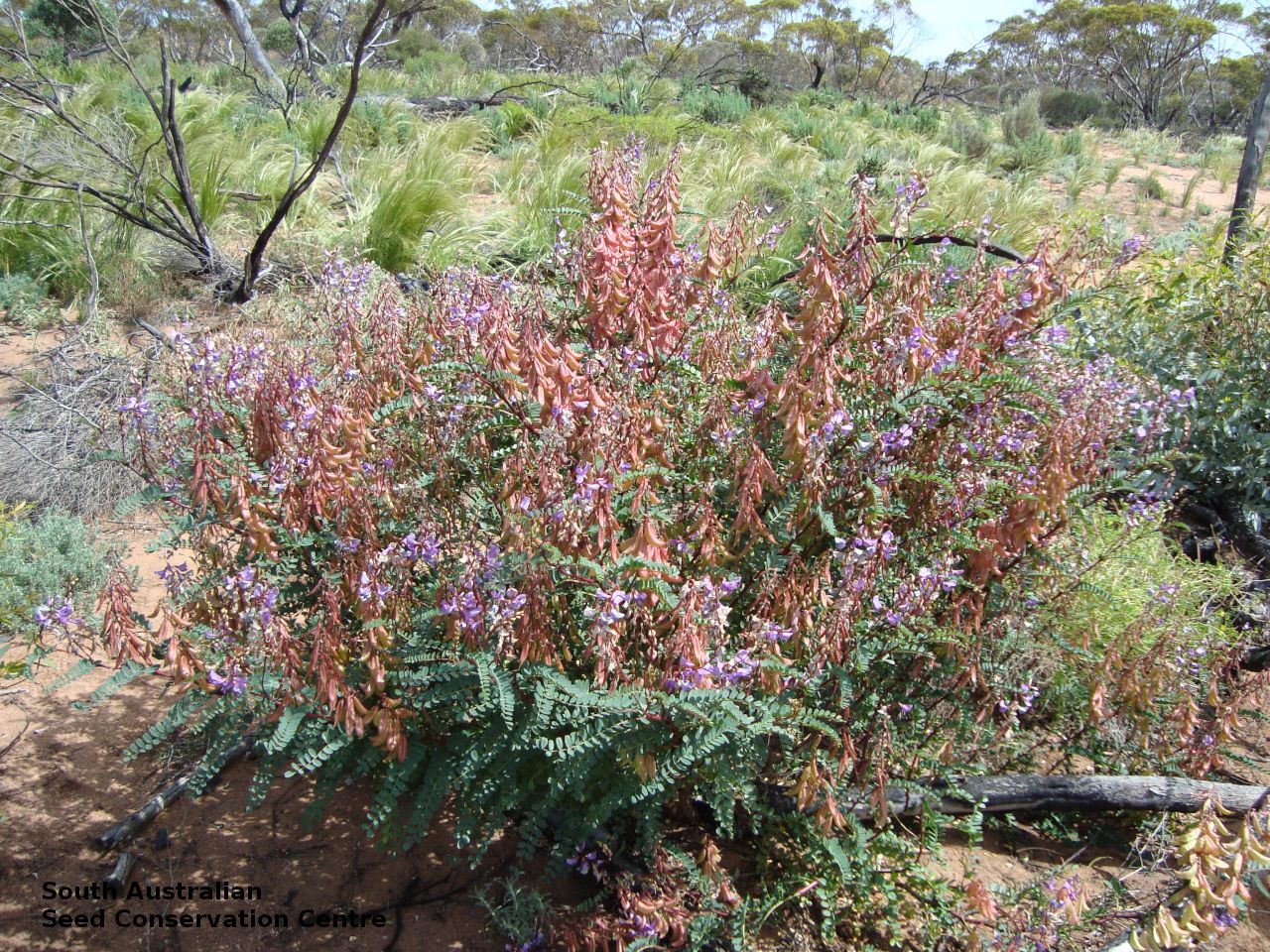
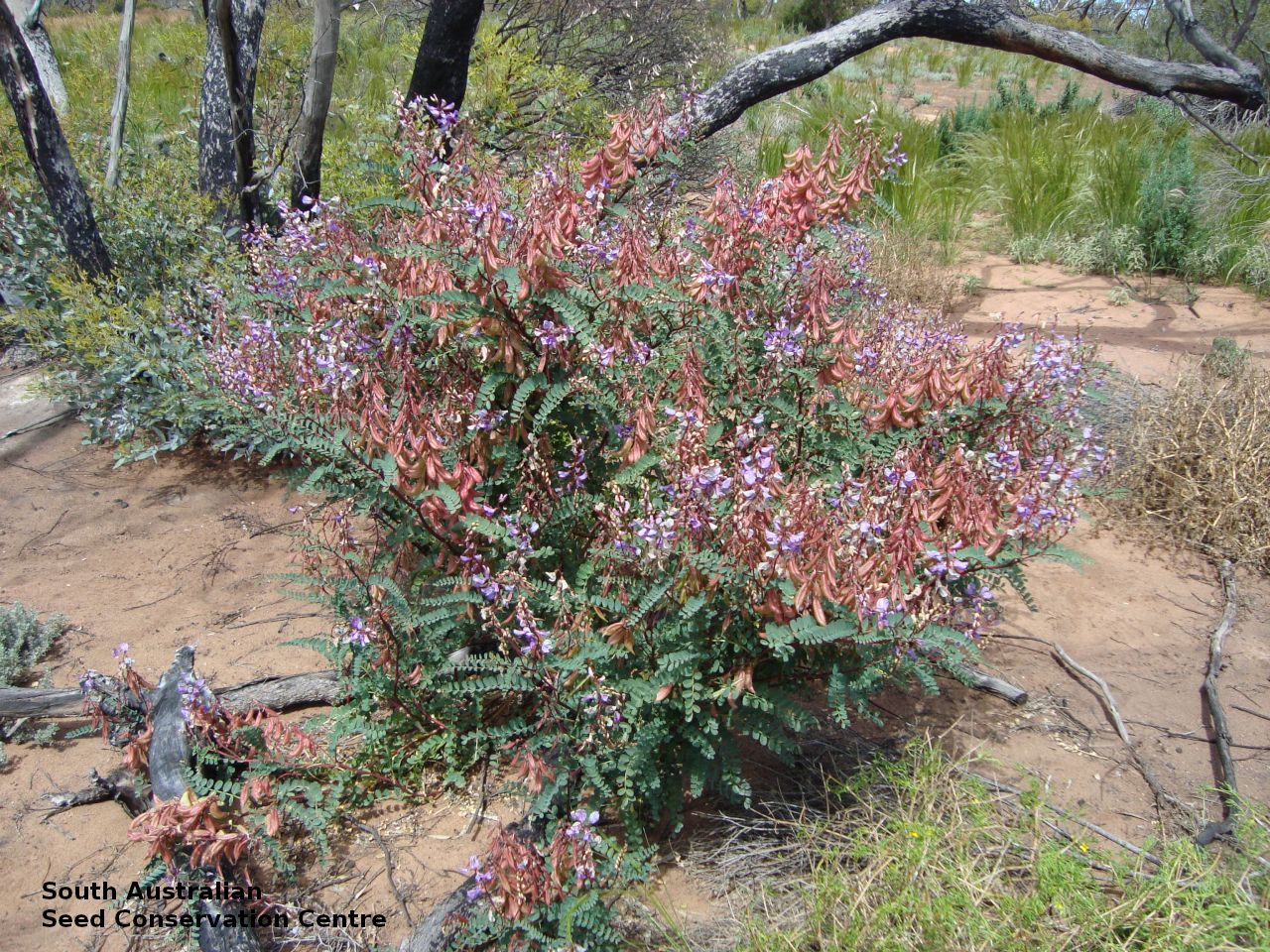
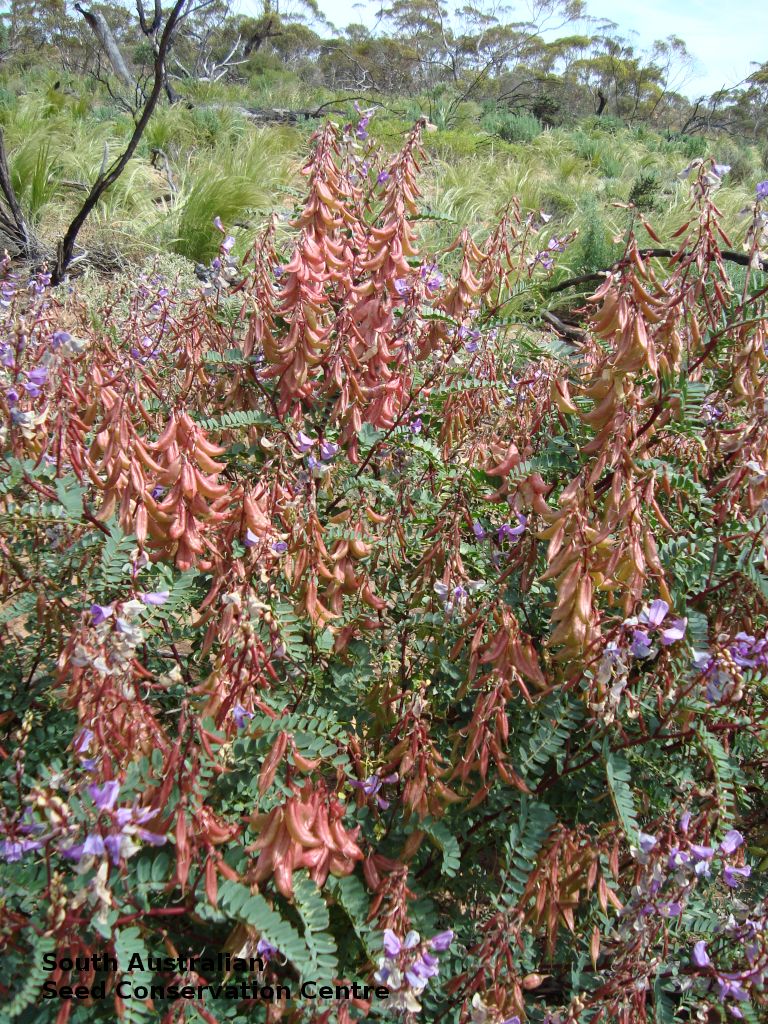
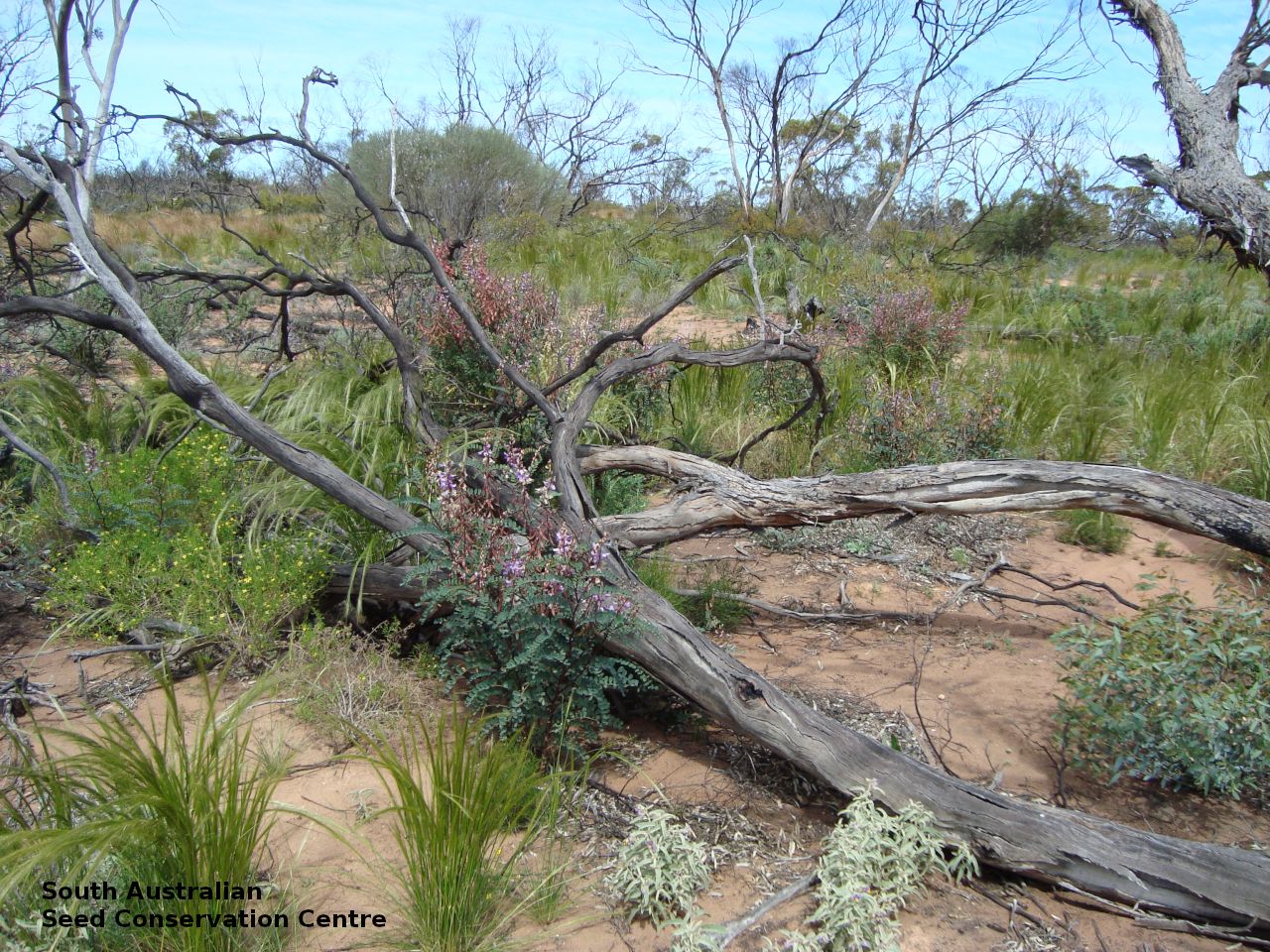
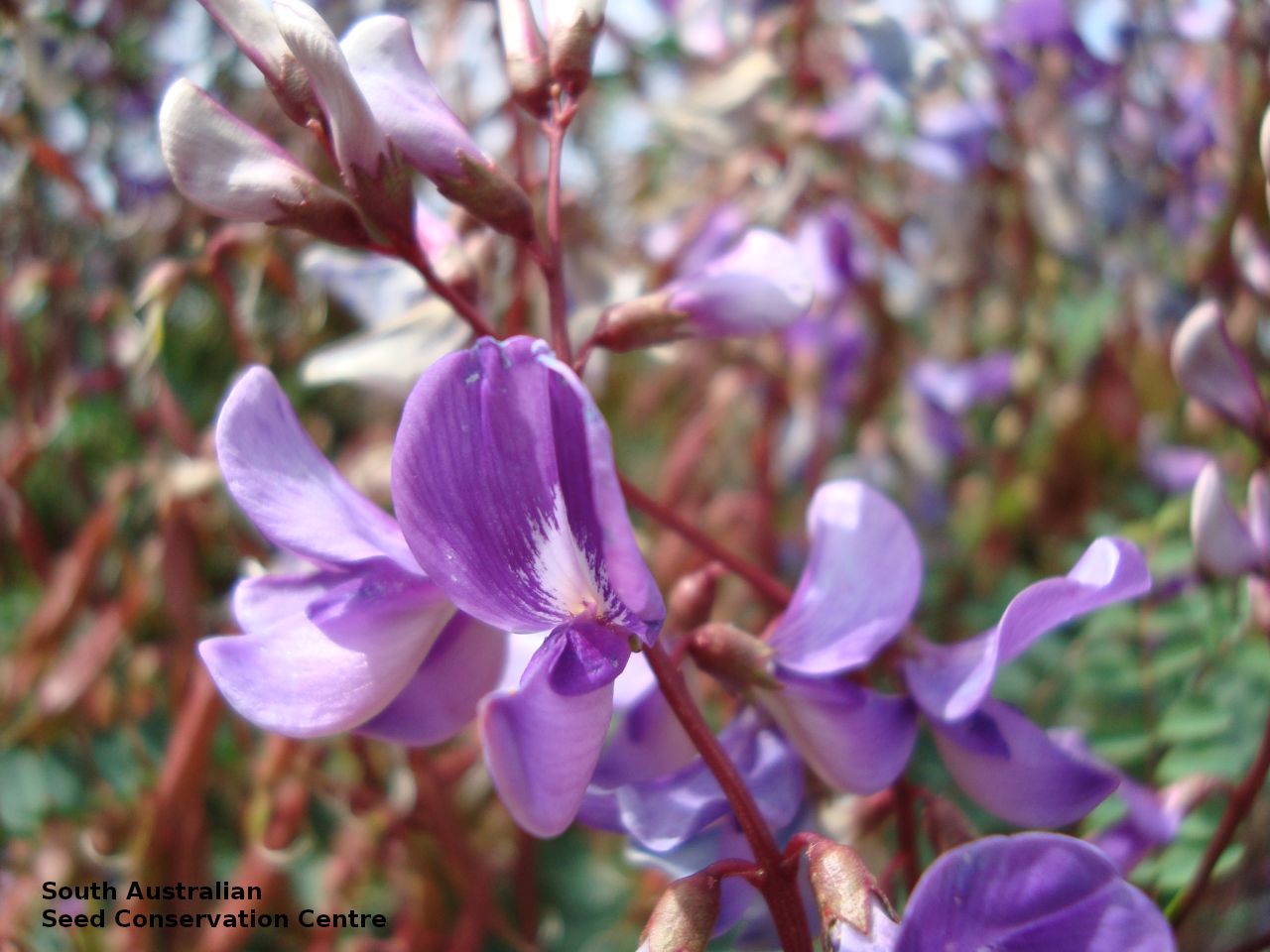
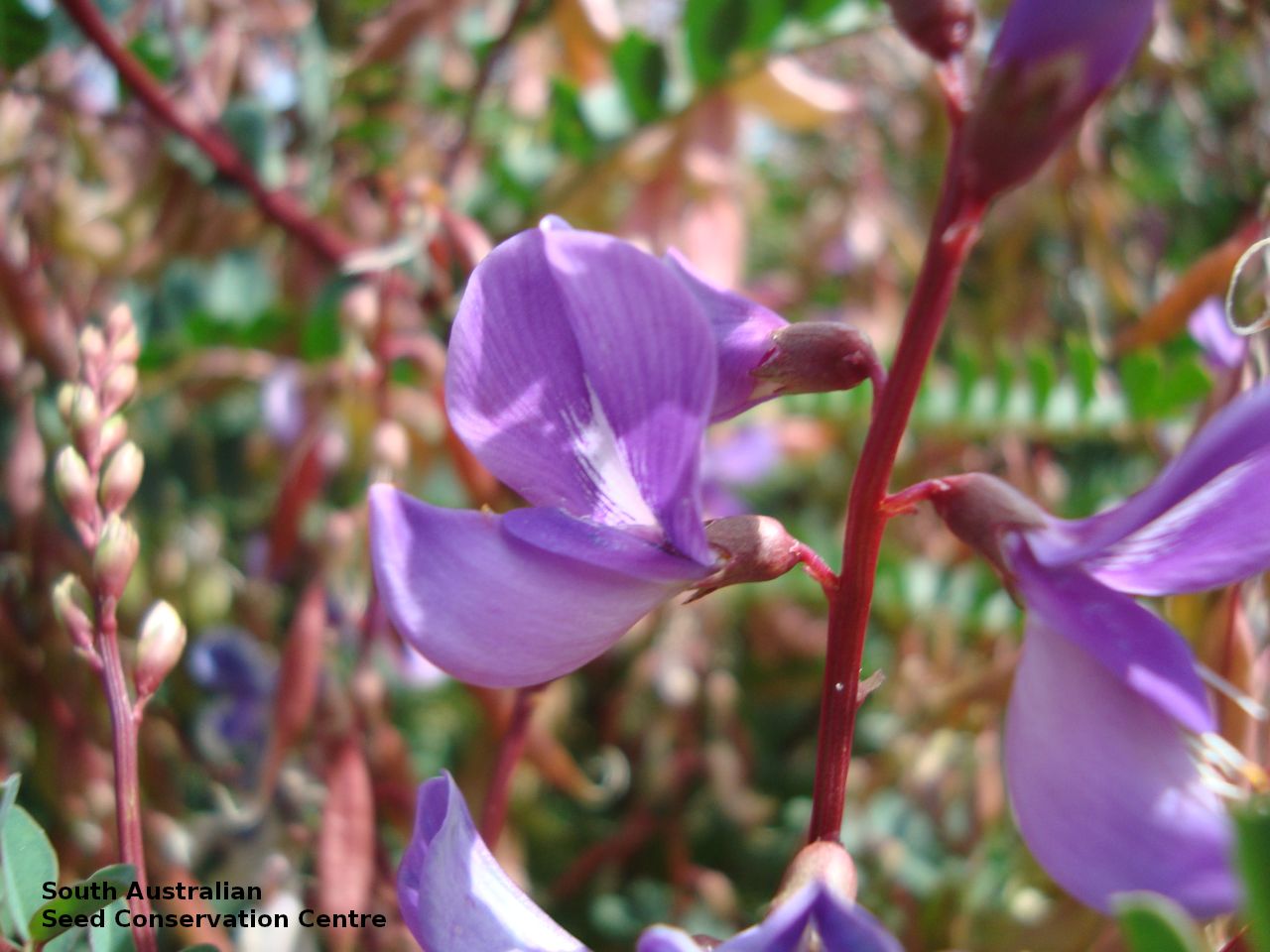
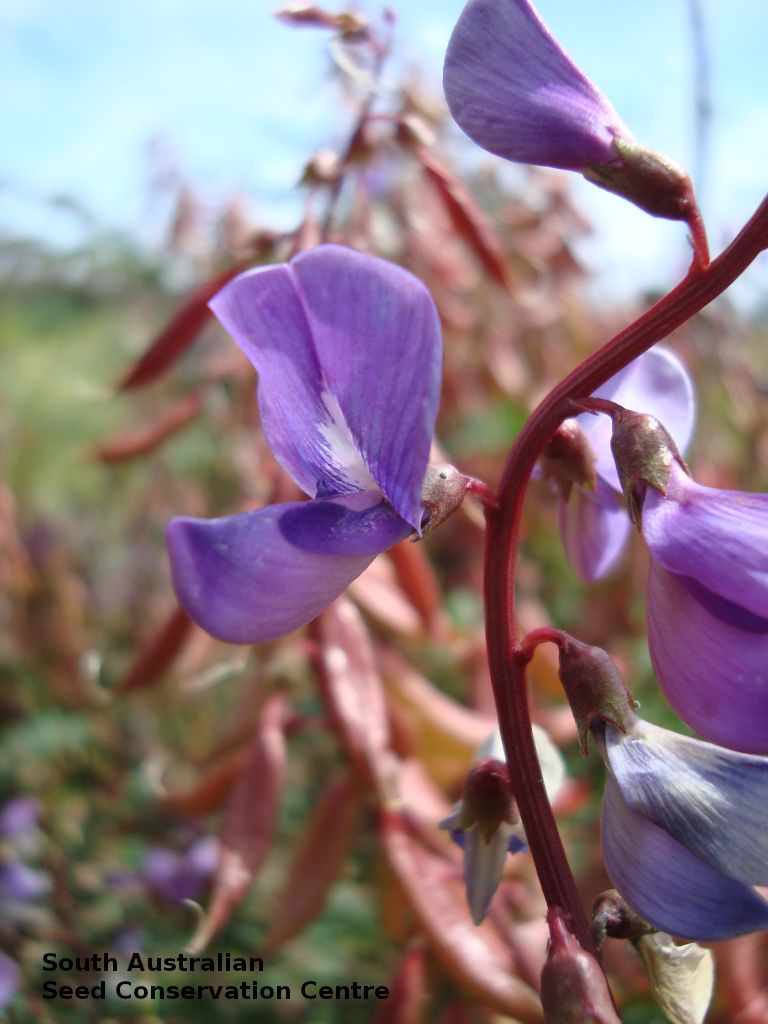
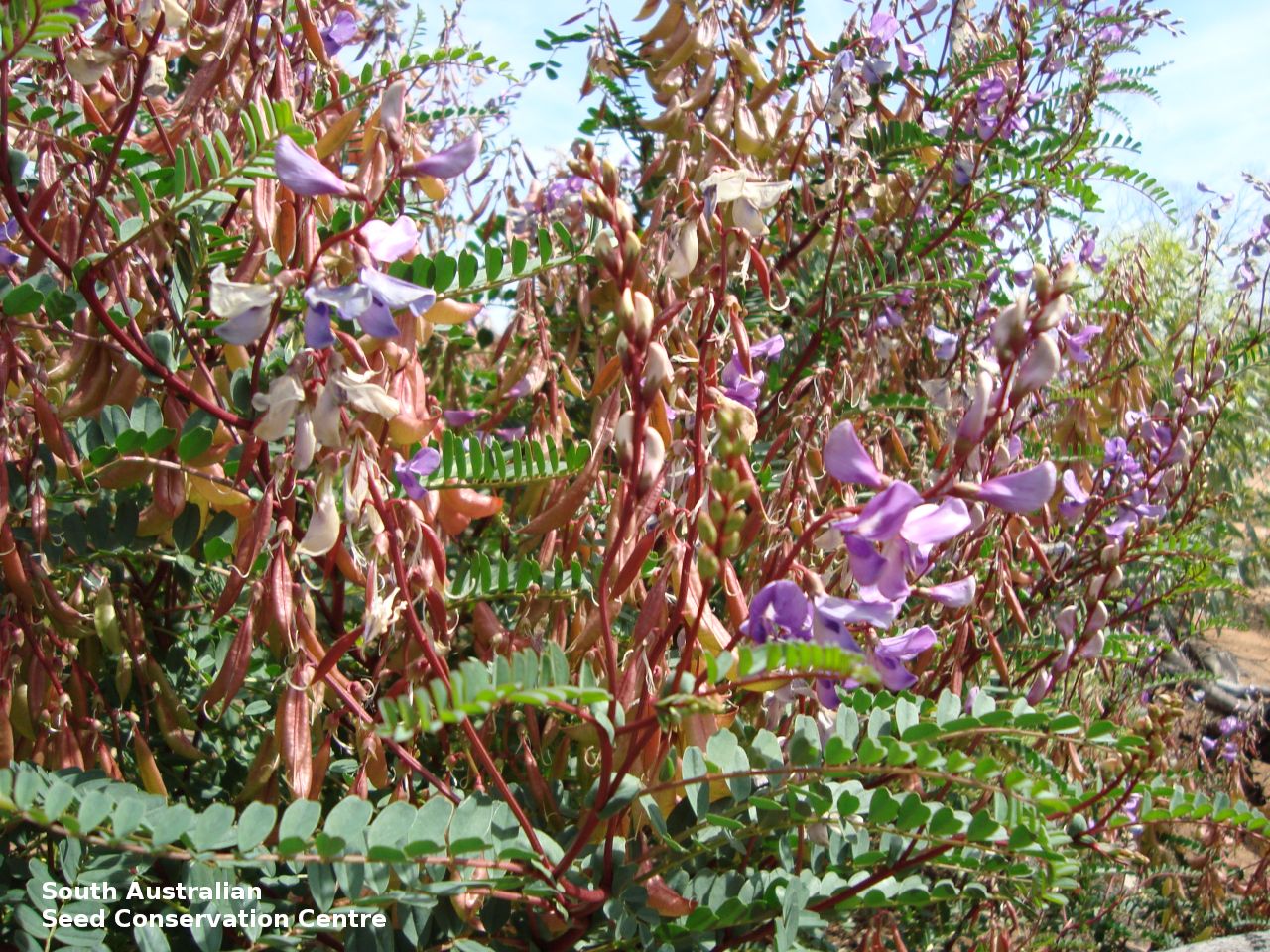
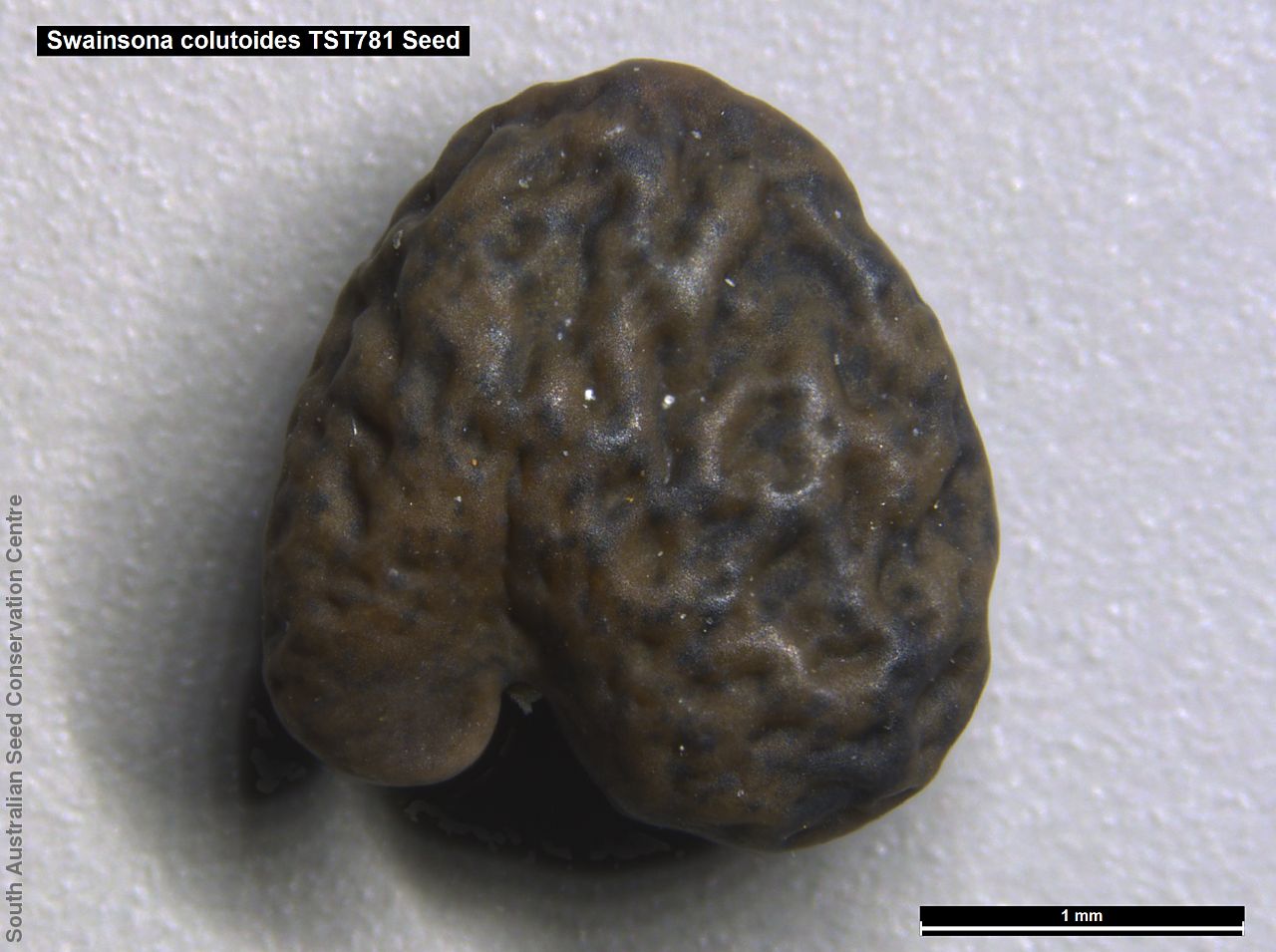
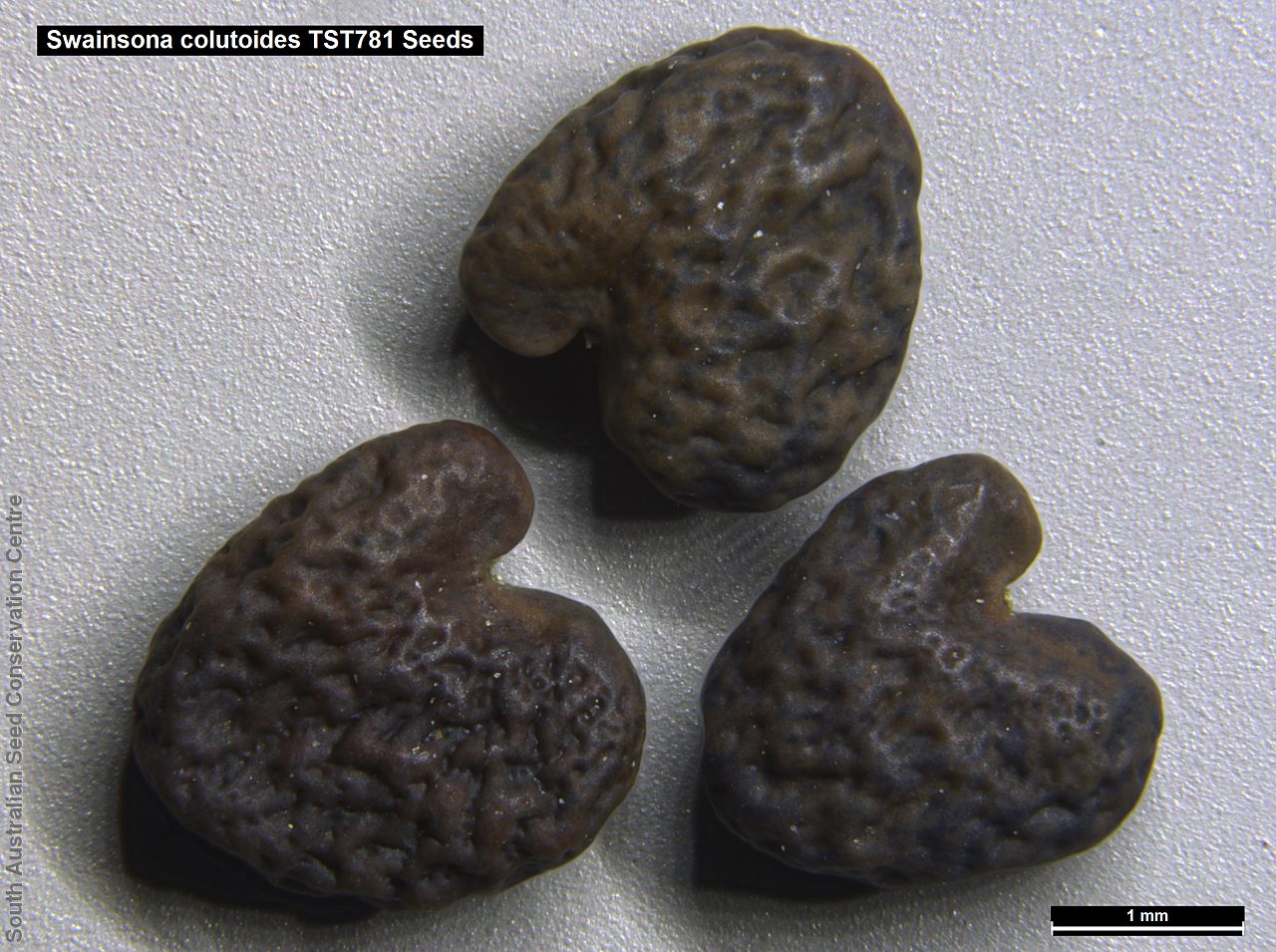
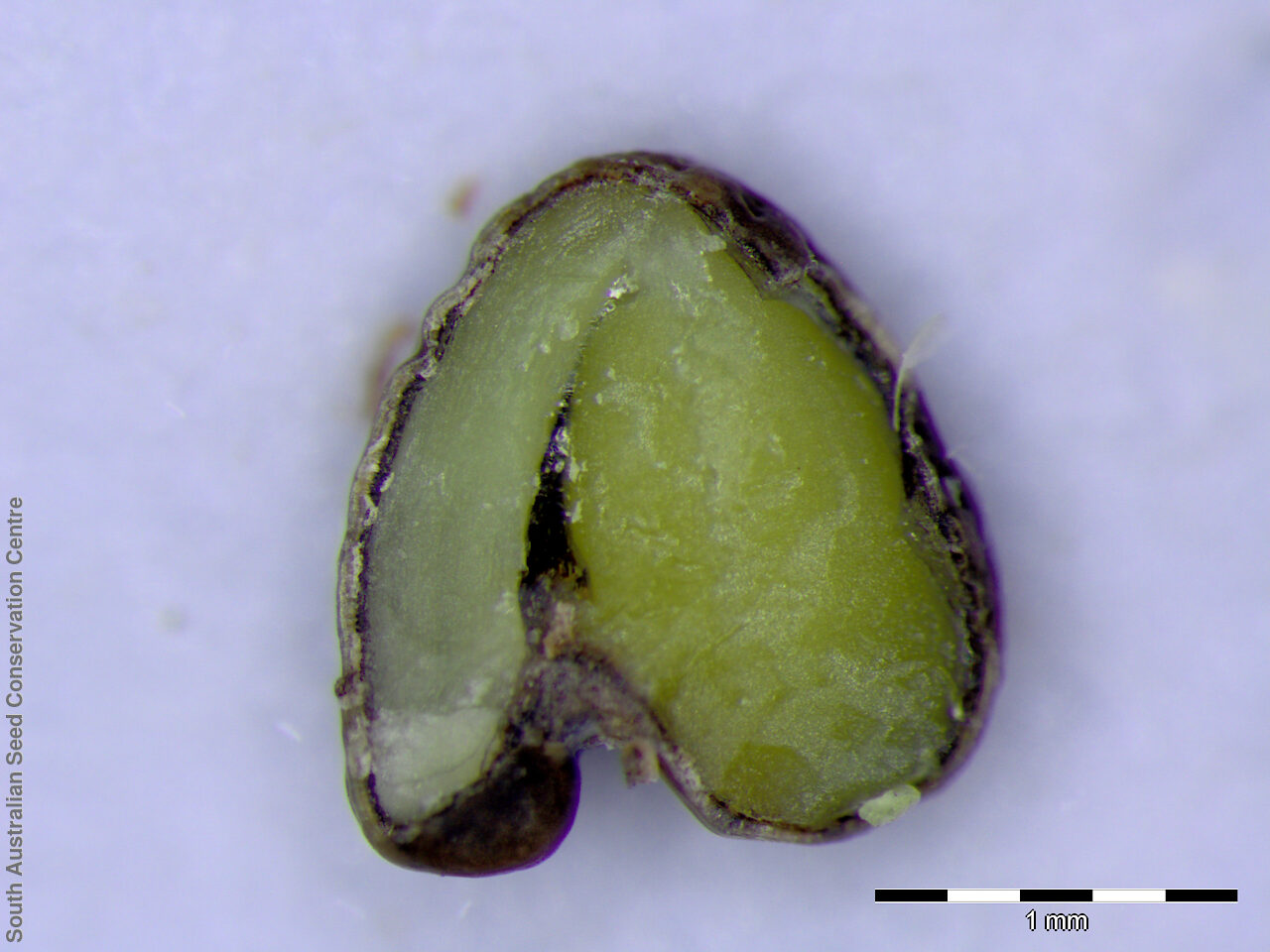
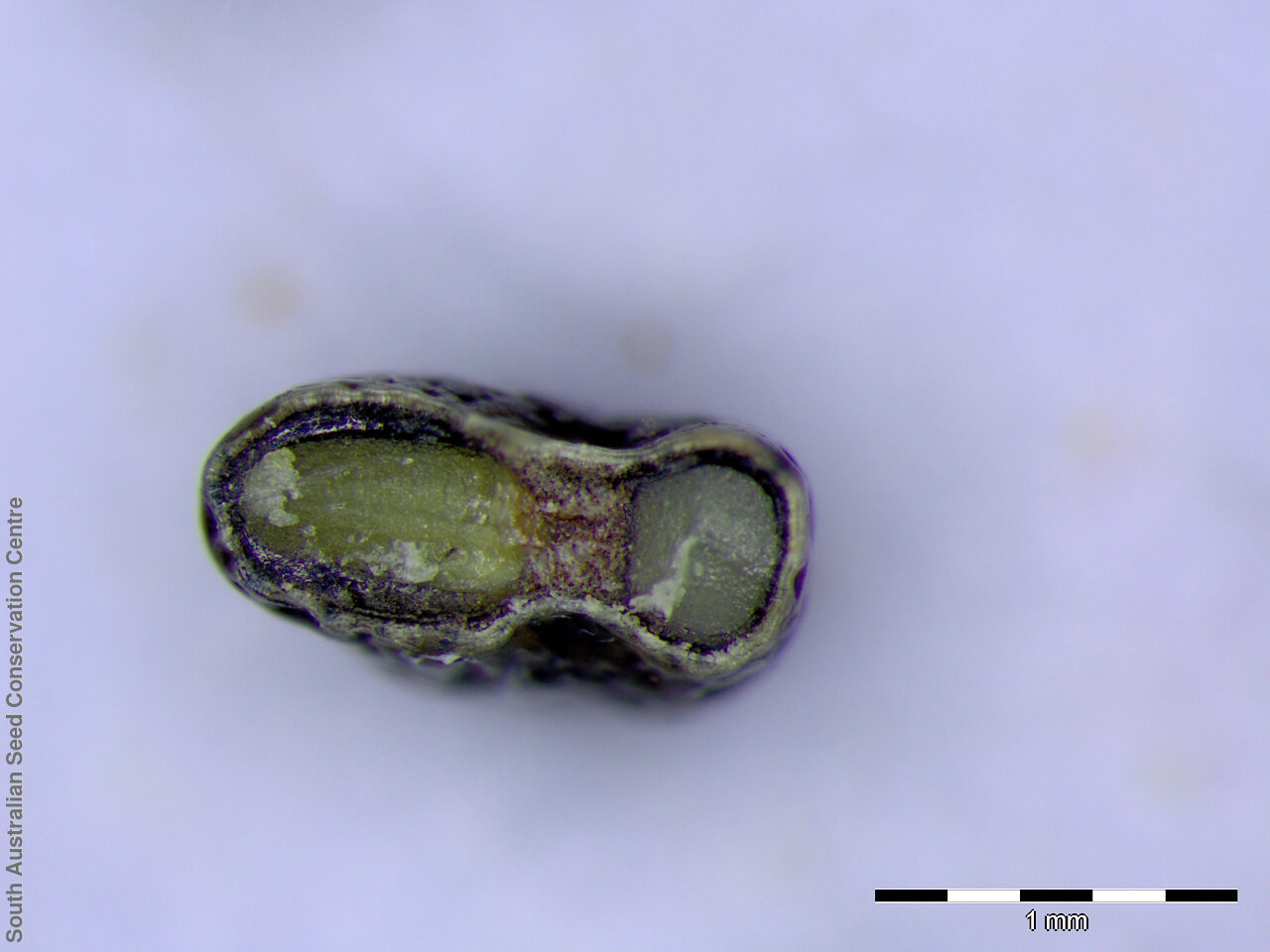

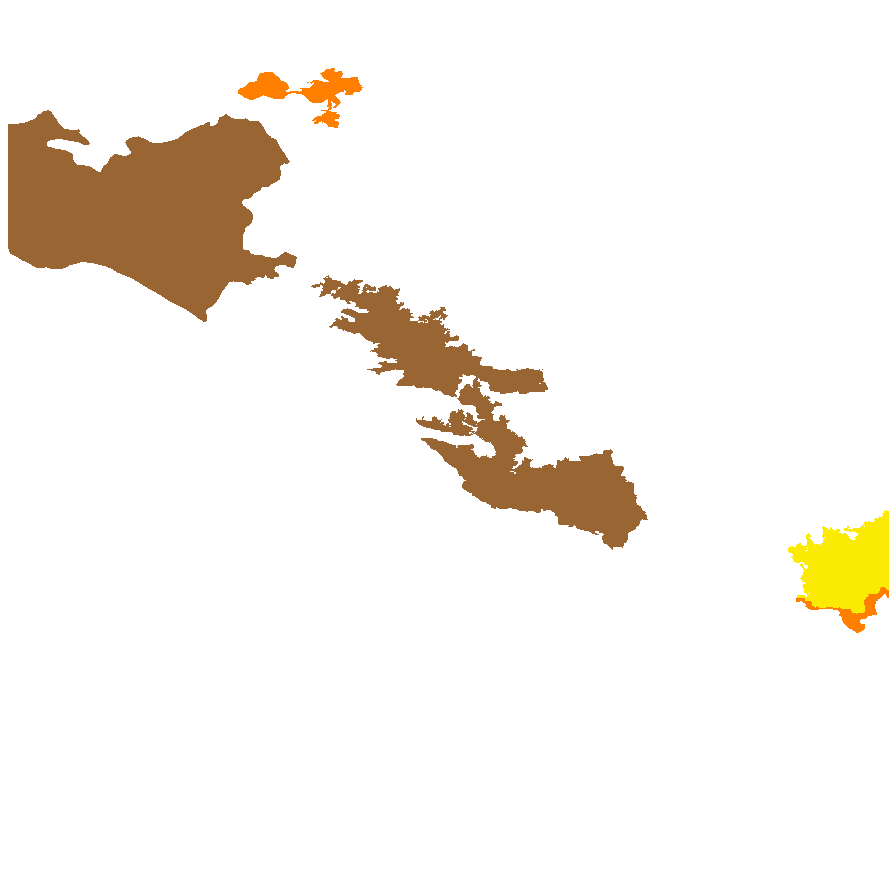
Common names
Bladder swainsona
Bladder Swainson-pea
Rattle-pod Swainson-pea
Etymology
Swainsona named after Isaac Swainson (1746-1812, an English scientist and horticulturalist who had a private botanic garden near London. Colutoides presumably from the Latin word Colutea meaning a pod-like kind of fruit; referring to the bladder shape of the fruit.
Distribution and status
Found scattered across the arid regions of South Australia. Also found in Western Australia, Northern Territory and New South Wales. Native. Uncommon in South Australia. Rare in Northern Territory and New South Wales. Common in Western Australia.
Herbarium regions: Nullarbor, Gairdner-Torrens, Eastern, Eyre Peninsula, Murray
NRM regions: Alinytjara Wilurara, Northern and Yorke, South Australian Arid Lands, South Australian Murray-Darling Basin
AVH map: SA distribution map (external link)
Plant description
Short lived shrub to 1.5m tall with reddish stems. Leaves are green and usually in groups of 13-17 leaflets. Flowers are purple along a long flower spike. Fruits are large papery bladder/balloon like pods to 30mm long. Pods remain on the stalk and are pale brown when matured. Seeds are dark brown, semi-flat reniform seeds to 2mm long with a wrinkled surface. Seed embryo type is bent.
Seed collection and propagation
Collect seeds between September and October. Collect the pale brown pods off the plant by hand. The seeds inside should be hard and dark brown. Place the pods in a tray and leave to dry for at least a week. Then rub the dried pods by hand to dislodge the seeds and remove unwanted material with a sieve. Store the seeds with a desiccant such as dried silica beads or dry rice, in an air tight container in a cool and dry place. From one collection, the seed viability was high, at 100%. This species has physical dormancy that need to be overcome for the seed to germinate (e.g. nicking or softening the seed coat).
| Location | No. of seeds (weight grams) | Number of plants | Date collected | Collection number Collection location | Date stored | % Viability | Storage temperature |
|---|---|---|---|---|---|---|---|
| BGA MSB | 10,000 (31.27 g) 10,000 (31.27 g) | 10 | 20-Sep-2009 | TST781 Eyre Peninsula | 1-Jun-2010 | 100% | -18°C |
| BGA | 4,000 (12.42 g) | 20+ | 30-Oct-2013 | DJD2704 North Western | 24-Mar-2015 | 50% | -18°C |
Number of plants: This is the number of plants from which the seeds were collected.
Collection location: The Herbarium of South Australia's region name.
% Viability: Percentage of filled healthy seeds determined by a cut test or x-ray.